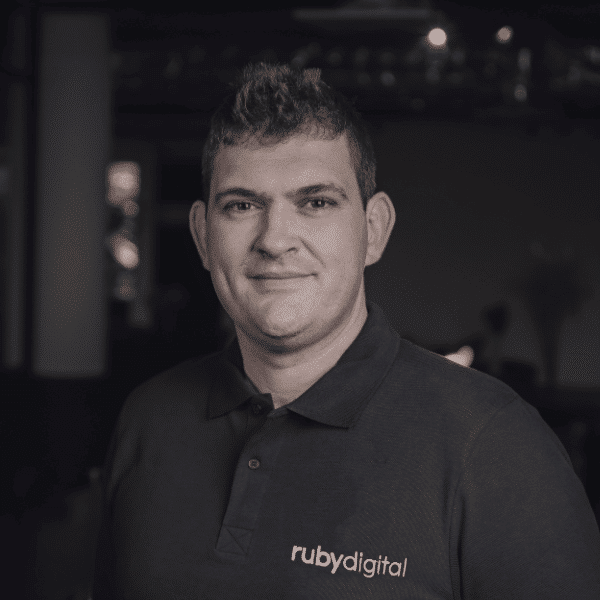In South Africa’s competitive digital landscape, your website is the cornerstone of your brand’s credibility, lead generation, and customer engagement. Yet, for many business owners and marketing teams in Johannesburg, Cape Town, Durban, and Pretoria, budgeting for a website feels overwhelming. Quotations range wildly—from R15,000 for a basic template to R500,000 for a custom platform—leaving entrepreneurs questioning: “What’s fair, and what’s right for my business?”
This guide cuts through the confusion, offering actionable insights tailored to South African SMMEs, startups, and enterprises. We’ll break down cost drivers, hidden expenses, and strategies to maximize ROI, whether you’re a Durban-based tourism operator or a fintech startup in Sandton.
Why Website Costing Feels Like a Blindfolded Gamble
As RubyWeb’s CEO notes, “Budgeting for a website often feels like throwing darts blindfolded.” The root of the confusion lies in three factors:
1. Varying Agency Specializations
Not all web developers serve the same market. A freelance designer in Pretoria might offer R15,000 brochure sites, while a Johannesburg agency building enterprise eCommerce platforms starts at R250,000. Without understanding your project’s scope, comparing quotes is like comparing apples to oranges.
2. Hidden Costs That Catch Businesses Off Guard
Many SMMEs forget to budget for ongoing expenses like hosting (R200–R1,500/month), SSL certificates (R800/year), or content updates. For example, a Cape Town bakery launching a WooCommerce site might face unexpected costs for payment gateway integrations (like PayFast or Peach Payments).
3. Ambiguous Scope Definitions
A “website” can mean anything from a 5-page portfolio to a multilingual portal with inventory APIs. Without a clear brief, agencies quote based on assumptions—leading to mismatched expectations.
RubyWeb’s Philosophy: “Your budget should reflect long-term value, not just upfront costs.” We start every project with a discovery phase to align scope, strategy, and investment.
Website Budget Ranges in South Africa: From Brochures to Enterprise Platforms
Tier 1: R15,000–R40,000 (Basic Brochure Sites)
Ideal For: Startups, freelancers, or event-specific sites needing a simple online presence.
Features:
- Templated designs (using tools like WordPress or Wix).
- Mobile responsiveness and basic SEO.
- Limited pages (5–10) with contact forms.
Case Example: A Durban-based photographer launches a portfolio site showcasing services and pricing.
Limitations:
- Minimal customization.
- Limited scalability for future growth.
Tier 2: R50,000–R100,000 (SME Lead Generation & Basic eCommerce)
Ideal For: Growing SMEs needing lead capture tools or simple online stores.
Features:
- Custom UX/UI design tailored to local audiences (e.g., multilingual support for Cape Town’s diverse market).
- CRM integrations (HubSpot, Zoho).
- Mid-tier SEO and content optimization.
Case Example: A Johannesburg consulting firm builds a lead-gen site with downloadable resources and webinar sign-ups.
Why This Works: Balances functionality and affordability for SMEs aiming to compete in metro markets.
Tier 3: R100,000+ (Custom Platforms & Advanced Solutions)
Ideal For: Enterprises requiring scalability, security, and deep integrations.
Features:
- API connections (e.g., integrating SAP ERP with a B2B portal).
- Custom databases or membership portals.
- Advanced eCommerce (500+ products, multi-warehouse inventory).
Case Example: A Pretoria medical supplier builds a HIPAA-compliant portal for bulk orders and client logins.
Pro Tip: Always request a detailed scope document. For instance, a “R80,000 eCommerce site” could exclude payment gateway fees or product upload costs.
Key Factors Influencing Website Costs
1. Functional Complexity
Every added feature—booking systems, client portals, or AI chatbots—increases development time. For example, a Cape Town hotel needing real-time room availability checks will pay more than a basic brochure site.
2. Third-Party Integrations
Local tools like Xero (accounting) or Everlytic (email marketing) require API work. A Durban retailer syncing online orders with in-store POS systems should budget for 10–20 hours of dev time.
3. Content Migration Challenges
Moving from legacy systems (e.g., old .co.za sites built on outdated platforms) often involves rebuilding content manually—a hidden cost many Johannesburg businesses overlook.
4. Design Customization
Templated sites save money but limit branding. A Pretoria law firm investing in custom design can differentiate itself in a saturated market.
5. Ongoing Maintenance
Post-launch costs include hosting (R200–R2,000/month), security updates, and content edits. Allocate 10–15% of your initial budget annually for upkeep.
Common Budgeting Pitfalls (and How to Avoid Them)
1. Underestimating Project Scope
A R30,000 budget for a 50-page eCommerce site? Unrealistic. Red flags include:
- Agencies promising “full customization” at bargain rates.
- Excluding mobile optimization or SSL certificates.
Fix: Benchmark against industry standards. A basic WooCommerce site in South Africa starts at ~R60,000.
2. Scope Creep Without Budget Adjustments
Adding features mid-project (“Can we add a blog?”) inflates timelines and costs.
Fix: Define a clear project roadmap and stick to a change request process.
3. Over-Engineering for Day 1
Startups don’t need enterprise-level tools. A Cape Town café launching online orders should prioritize a simple menu system over a loyalty program—for now.
Fix: Build a Minimum Viable Website (MVW) and scale using customer feedback.
Maximizing ROI: Where to Allocate Your Budget
1. Invest in UX and Conversion Rate Optimization (CRO)
A stunning site that doesn’t convert is a liability. For example, a Durban tour operator could see a 30% boost in bookings by simplifying their checkout process.
2. Prioritize Local SEO
Optimize for location-based keywords like “Johannesburg accounting services” or “Cape Town wedding venues.” Google Business Pages integration is non-negotiable.
3. Phase Your Development
Launch with core features, then expand. A Pretoria gym might start with class schedules and membership sign-ups, adding a video-on-demand library later.
RubyWeb Insight: “Start small but architect for growth. A phased approach reduces risk and aligns spending with ROI.”
How RubyWeb Delivers Transparent, Value-Driven Budgeting
Based in South Africa, we serve businesses in Johannesburg, Cape Town, Durban, and Pretoria with a collaborative approach:
Step 1: Deep-Dive Discovery
We analyze your business goals, audience, and tech stack. For example, a Cape Town NGO might need donation integrations, while a Johannesburg B2B requires CRM syncs.
Step 2: Tiered, No-Surprise Quotes
Choose from clear packages aligned with your budget. Need a basic site now but plan to scale? We’ll map a roadmap for future phases.
Step 3: Plain-Language Contracts
No hidden fees or tech jargon. We explain costs for hosting, maintenance, and integrations upfront.
Step 4: Honest Advisory
If a feature doesn’t align with your goals (e.g., a complex membership portal for a startup), we’ll advise against it—even if it means a smaller project.
Ready to Transform Your Website into a Growth Engine?
Your website isn’t just a digital placeholder—it’s a revenue driver, brand builder, and customer service channel. Whether you’re a startup in Cape Town or an enterprise in Sandton, strategic budgeting ensures your site delivers measurable ROI.
Take the Next Step:
Book a free 30-minute consultation with RubyWeb. We’ll help you navigate costs, avoid pitfalls, and build a website that grows with your business.
???? [Schedule Your Free Consultation]
Serving businesses in Johannesburg, Pretoria, Cape Town, Durban, and beyond—let’s turn your digital vision into reality.





